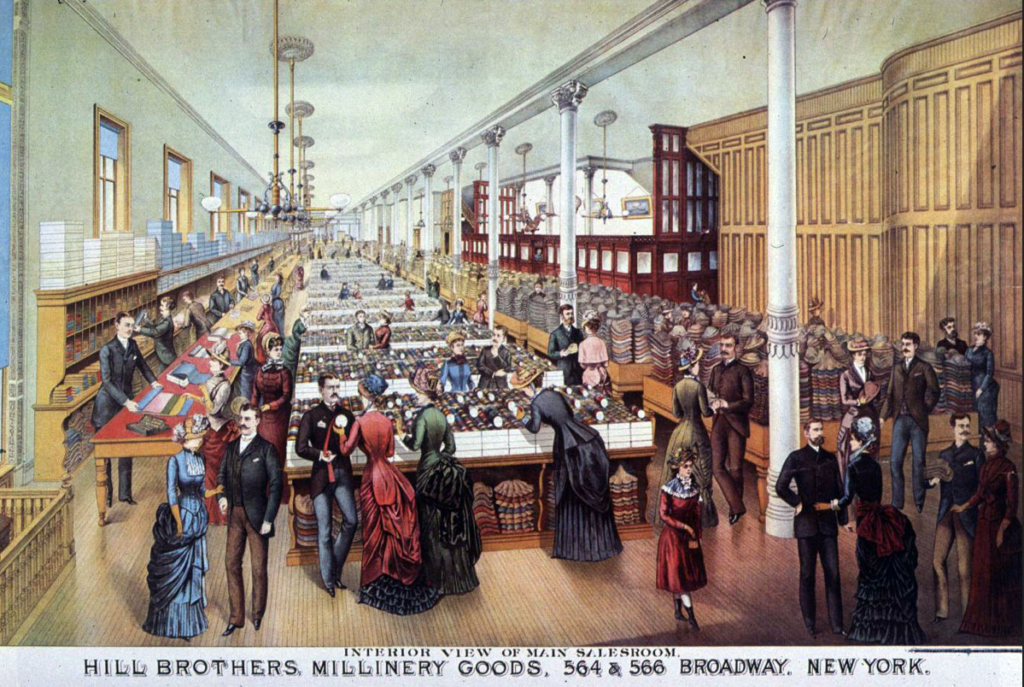On the corner of Prince and Broadway stands the grandiose store-and-loft building at 560-566 Broadway. The building was commissioned to architect Thomas Stent by prominent real estate developers of the time John Jacob Astor and William Astor. Stent designed this six-story building in 1883 in what was known as the “Commercial Palace Style”, part of the architectural movement that was transforming New York into a city of palatial edifices with beautiful marble and stone facades. In spite of the building’s bulky massing, the brick, stone and cast iron building has many intricate details that add to its visual appeal — the columns are adorned with foliate-carved stone and the cast-iron pilasters between the windows have floral detailing on them.
At this time, the surrounding neighborhood was known to be quite sophisticated, and had slowly become occupied with dry goods merchants, as well as the millinery trade — the manufacture, design and sale of women’s hats. Fashionable hats were a must in the closet of any stylish woman in the 19th century. The more elaborate, and the more the feathers, the better. Leading millinery importers and manufacturers the Hill Brothers were first headquartered in this building.

In 1907, Astor had leased out 70,000 square feet of the space in 560-566 Broadway to renowned German goods importers — Dieckerhoff, Raffloer & Company. Eventually, Dieckerhoff & Co. leased out the entire building — where the company thrived for nearly a decade before it began facing troubles. In 1917, the United States was pulled into the Great War and anti-German sentiment was rising. In a series of dramatic events, the New York Tribune reported that the Federal Government’s Alien Property Custodian had accused the firm of a plot “to conceal valuable enemy properties” under the guise of an American corporation. By the end of 1918, Dickerhoff, Raffloer & Co. was liquidated and would no longer be q chief distributor of German novelties.
By the mid-20th century, the neighborhood was seeing decline and neglect and then slowly came back to life, with the spaces being filled with artists’ lofts and galleries. By late 1977, Joel Dean, Giorgio DeLuca, and Jack Ceglic’s high-end food and grocery store named Dean & DeLuca occupied part of the ground floor (read more about the story behind Dean & DeLuca in a previous post). A few years after the the store’s opening, the renowned Max Protech Gallery moved into the second floor of the building. It was soon followed by the Staley-Wise and Peter Freeman galleries. The New York Times had stated that “560 Broadway […] once housed sweatshops and now includes galleries capitalizing on the SoHo art community’s inevitable eastward drift.” The building has been witness to the neighborhood’s transformation over more than a century.
The well-preserved building, now known as 100 Crosby Street, still stands proudly today along Prince Street between Broadway and Crosby. Dean & DeLuca closed in recent years, but the retail space is now occupied by Aritzia’s Super World and the Converse flagship store.